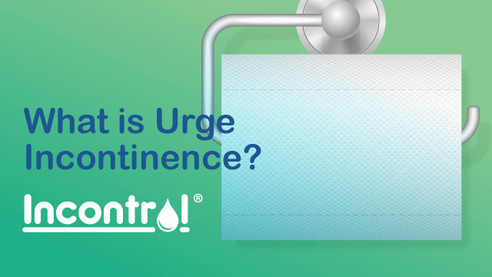2021 Jun 30th
What is Urge Incontinence?
Urge incontinence is a type of incontinence in which a sudden urge to urinate arises which cannot be suppressed. Urge incontinence occurs in both women and men, and it is estimated that about 1 in 10 women over 65 experience urge incontinence, but younger women and men can also be affected. In women, urge incontinence sometimes coincides with stress incontinence, also known as mixed incontinence. After stress incontinence, urge incontinence is the most common form of incontinence.
Symptoms of urge incontinence:
Unnecessary bladder contractions make the bladder feel full even with just a small amount of urine in it. These contractions make the person feel a strong urge to urinate.
Due to the uncontrolled contractions of the bladder muscle, the bladder may be squeezed empty and cause involuntary urine loss. The result is an uncontrolled flow or leakage of urine.
Causes of urge incontinence:
Urge incontinence can have several causes. Irritation of the bladder, old age and psychological factors may play a role in the development of urge incontinence. Although age itself is not a cause of urge incontinence, it is more common in the elderly as well as in people with nerve disorders such as Multiple Sclerosis (MS) or dementia. Other causes of urge incontinence include (benign) prostate enlargement and bladder stones. Obesity, stress and medication use can also contribute to the development of urge incontinence.
Urge incontinence is often accompanied by an irritable or overactive bladder. People with an overactive bladder have to urinate more frequently than usual. To prevent accidents, people with urge incontinence go to the toilet more often than necessary, making the bladder even weaker.
Solutions for urge incontinence:
The solution for urge incontinence depends on the cause. A doctor or health care professional should always help diagnose the type and cause of the incontinence. Bladder training, along with a urine diary may often be the first steps. Bladder training can help reduce the symptoms of urge incontinence or even make them disappear altogether. This technique is often combined with pelvic floor exercises and medication. Your doctor may also recommend making specific dietary changes and weight loss may also help reduce symptoms.
If symptoms are not improved after 3 months of bladder training, a doctor or specialist may advise a surgical procedure or medications.
Sources:
https://www.abena.com/knowledge-center/continence-care/types-of-incontinence/urge-incontinence

